Caterpillars of Capitol Reef National Park: An Inquiry
 Before exploring the inquiry projects of children and young adults, think about your own inquiry process. What motivates you to seek information and ideas? The following example is a quick glimpse at how quickly every day activities can turn into inquiry-rich learning experiences.
Before exploring the inquiry projects of children and young adults, think about your own inquiry process. What motivates you to seek information and ideas? The following example is a quick glimpse at how quickly every day activities can turn into inquiry-rich learning experiences.
Get outdoors. Open your eyes.
Since reading Last Child in the Woods by Richard Louv, I've been thinking a lot about the importance of maintaining a connection with nature. My husband and I carry our digital camera practically everywhere we go to record fascinating encounters with the natural world.
Last fall while driving the backroads of Capitol Reef National Park, we stopped to photograph Ackland Spring in Hartnet Draw that had been used by American Indians and local ranchers for hundreds of years. On the way back to the car, we encountered a bright blue caterpillar. The larva was crawling along a wash between the road and the spring.
I wonder... When we looked closer we were fascinated by the ants that were crawling on the caterpillar and wondered whether the larvae was being hurt by the ants.
I question... What kind of butterfly larvae is this? What will it look like as a butterfly? What kind of ants are these? What's the relationship between the ants and the caterpillar?

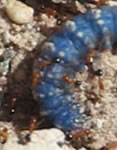

I explore... After downloading our video and still photographs, we start our investigation. We search for caterpillars in Utah. We compare our caterpillars with databases and Google images. We get frustrated because we're unable to find the name of our caterpillar. I begin sending emails to webmasters to see if anyone can help me identify my caterpillar.
 I read, question, explore some more... The Utah Bug Club describes the symbiotic relationship between Lycaenidae (Gossamer-wing butterfly) caterpillars and ants. Is my caterpillar a member of the lycaenidae family?The article cites the book The Ants by Holldobler and Wilson (1990). I have a book of essays by E.O. Wilson called Nature Revealed: Selected Writings 1949-2006. I scan the chapters and read articles about ants and their encounters with other creatures.
I read, question, explore some more... The Utah Bug Club describes the symbiotic relationship between Lycaenidae (Gossamer-wing butterfly) caterpillars and ants. Is my caterpillar a member of the lycaenidae family?The article cites the book The Ants by Holldobler and Wilson (1990). I have a book of essays by E.O. Wilson called Nature Revealed: Selected Writings 1949-2006. I scan the chapters and read articles about ants and their encounters with other creatures.
As I get deeper into my inquiry, I become less worried about the name of my caterpillar and more interested in the relationship between the two tiny creatures.
I explore some more ... I search for information on the topic of myrmecophile, an organism with a mutualistic association with ants.
- Wikipedia: Myrmecophile
- Talking Caterpillars: Interspecies Communication in a Butterfly-Ant Mutualism
- Lycaenid Butterflies and Ants
- Myrmecophily: Ants and Butterflies
- Butterflies that need ants
- Butterfly Ant Liason
I assimilate and infer... Although I'm not sure about the specific name of my caterpillar, it seems to have a mutualistic relationship with the ants. As I look closer by zooming into my photograph, I examine the secretion glands on the caterpillar. When I compare my photos of the caterpillar and ants with photos and diagrams online, they look very similar.
 One inquiry leads to other inquires...
One inquiry leads to other inquires...
I question and explore, I assimilate and infer... What other relationships in nature have I photographed?
As I look over my photographs taken in southern Arizona this winter, I begin thinking about the relationship between plants and animals. I reflect on what I know about desert ecology. Was a javelina nibbling the cactus in the photo on the right?
I assimilate... I see relationships in nature everywhere.
I infer... When a species dies, what's the long term impact?
I question... How do we help people to understand their impact on nature?
 Other inquiries leads to deeper questions...
Other inquiries leads to deeper questions...
When you reach deep into an inquiry, all kinds of connections seem to emerge. Articles in the newspaper, reports on the news, and everyday activities all seem to spark a thought related to the inquiry.
As I read the book Einstein: His Life and Universe by Walter Isaacson, I scan Wikiquotes for quotes attributed to this great thinker. "If the bees should die, humankind would have, but four more years to live". - Albert Einstein. Is this true?
I question, read, and reflect... What would happen if all of the bees disappeared? Is this possible? I dive into books and websites related to books. Is pollinator decline a real issue today? What can I do to help the pollinators? What would happen if all the pollinators disappeared?
The Books for Adults
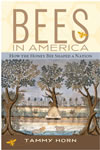



- Bees in America: How the Honey Bee Shaped a Nation by Tammy Horn (Provides a wonderful historical context)
- Robbing the Bees: A Biography of Honey--The Sweet Liquid Gold that Seduced the World
by Holley Bishop (Great look at honey) - The Forgotten Pollinators by Stephen L. Buchmann (Landmark book on pollinators)
- The Secret Life of Bees by Sue Monk Kidd (Just a bee subplot, but still makes me think)
The Books for Young People
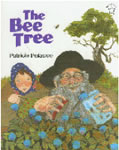
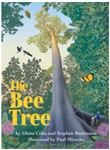
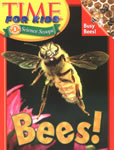

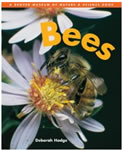
- The Bee Tree by Patricia Polacco (Wonderful story for kids)
- The Bee Tree by Stephen Buchmann (Great combination of science and storytelling)
- Time For Kids: Bees! (Super, easy to read articles)
- DK Readers: Busy, Buzzy Bee (Level 1: Beginning to Read) by DK Publishing (Wonderful for beginning readers)
- Bees (Denver Museum Insect Books) by Deborah Hodge (Great photographs)
The Websites
- Wikipedia: Pollinator Decline
- Pollination Home Page
- Wikipedia: Colony Collapse Disorder
American Beekeeping Federation - Bee Culture
- Ontario Beekeeper's Association
- BeeBase
I take action... What can I do to help the pollinators?
